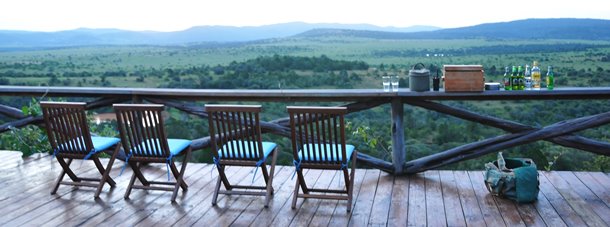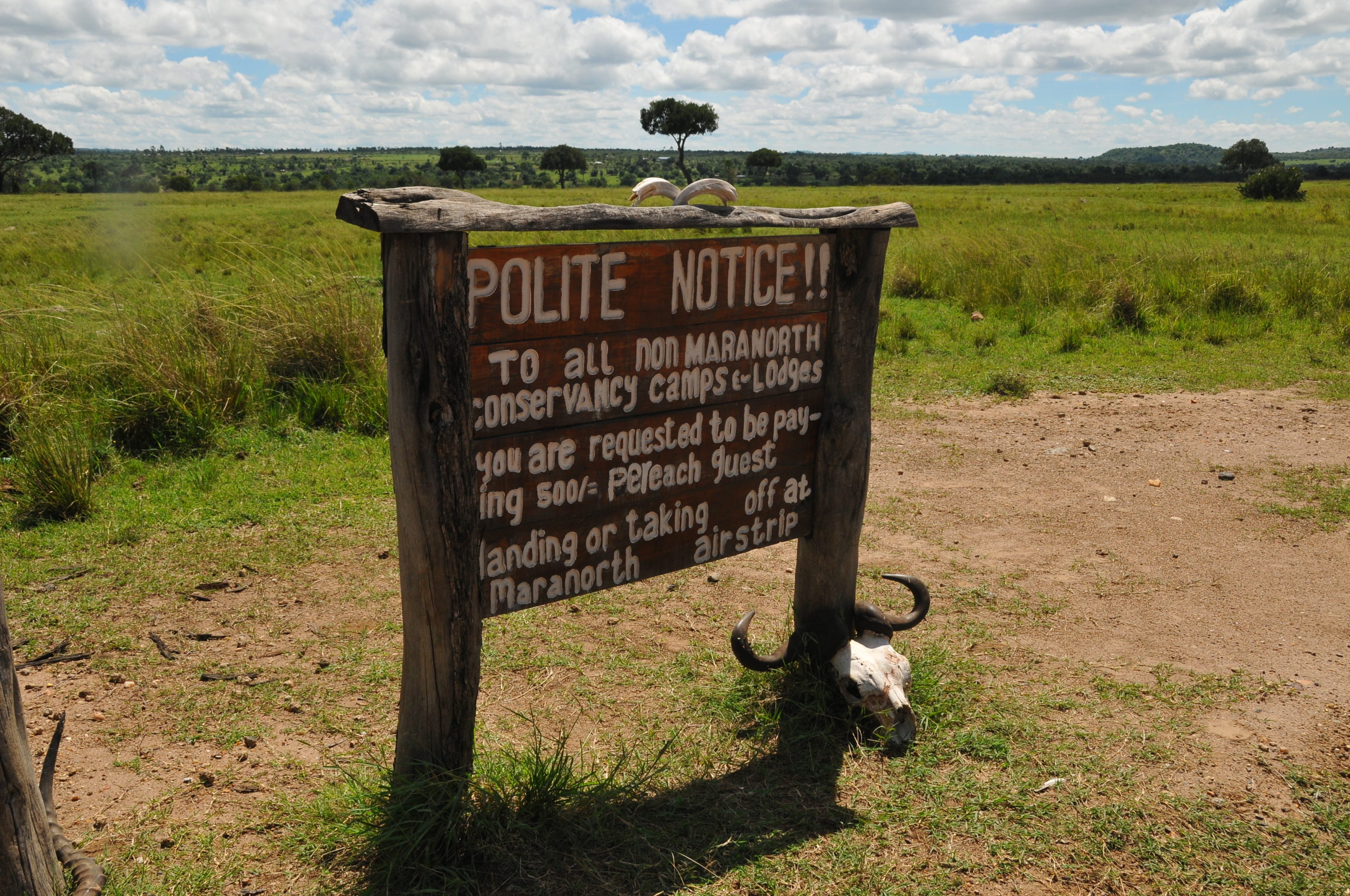This is the second part of my blog about my trip to Kenya last May to see specific rhino projects which Real Africa is supporting through our partnership with Save the Rhino International. To find out more about this partnership or to support our #RealRhinos campaign please click here. To find out about our new partnership with Animals Saving Animals, a small organisation working in sub-Saharan Africa to train and deploy anti-poaching dogs, please click here.
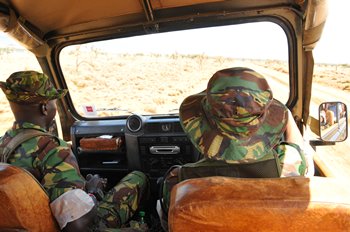 We arrived at the gates to Lewa late morning. An open 4×4 pulled up with two armed rangers fully clad in camouflage fatigues. Rianto beamed at us, taking out a cake tin to reveal freshly baked banana bread – it was still warm. He passed back a battered holdall which tinkled with the sound of bottles. Then came a bottle opener as we headed off down a track, “Beer?”
We arrived at the gates to Lewa late morning. An open 4×4 pulled up with two armed rangers fully clad in camouflage fatigues. Rianto beamed at us, taking out a cake tin to reveal freshly baked banana bread – it was still warm. He passed back a battered holdall which tinkled with the sound of bottles. Then came a bottle opener as we headed off down a track, “Beer?”
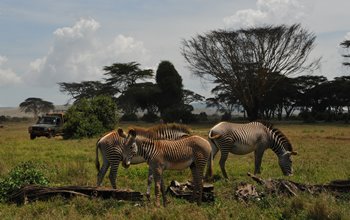 Driving across the Lewa Conservancy, jewel green following May rain, we saw a plethora of wildlife – huge herds of zebra, including Grevy’s Zebra with their distinct stripes and white bellies, antelope scattering as we made our way, and warthog raising their tails in alarm as we passed.
Driving across the Lewa Conservancy, jewel green following May rain, we saw a plethora of wildlife – huge herds of zebra, including Grevy’s Zebra with their distinct stripes and white bellies, antelope scattering as we made our way, and warthog raising their tails in alarm as we passed.
After around 20 minutes we stopped as Rianto grabbed the binoculars and pointed to the horizon, where focusing our gaze we saw at first one, then two, then five rhino – a mix of both black and white. Rianto then counted and announced “Eleven Rhino” – we looked again, scanning the horizon, and sure enough wallowing in the mud and high on the brow of the hill were more rhino. I’ve never seen so many all in one place before – a great testament to the work of the Borana and Lewa rangers and conservation teams.
We carried on until reaching the headquarters of the Anti-poaching Dog Squad, one of the projects supported by Save the Rhino International which I had specifically come to Kenya to visit. I could see a large bloodhound, poised and ready for action and the rangers all gathered around a small thatched boma. After being introduced to softly-spoken Wilfred and the rest of his dedicated team of rangers, Rianto helped to explain how the dog squads are used on Lewa and Borana to protect the rhino. There are around 160 precious rhino across the two conservancies – around 97 black and 63 white, although with the rhino successfully breeding this number will hopefully increase. Some of the rhino have the most spectacular horns, like Wai Wai, a female black rhino who has reared a number of calves on Borana – all need to be protected – patrolled day and night against the threat of poachers. All the 4×4 safari vehicles have detailed ID booklets with pictures to allow you to identify the rhino as you move around the conservancies.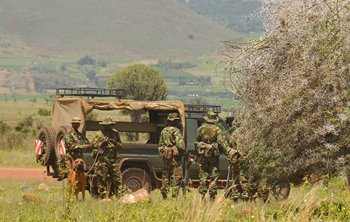
The anti-poaching dogs have two key roles: to track and attack poachers. Bloodhounds are the trackers with the ability to cover vast distances over tricky terrain, tracking scent from a single footstep for over 24 hours. Belgian malinois are the attack dogs although they also have the ability to sniff out illegal arms and caches of ivory and horn. GPS tracking devices are attached to weapons when they are discovered by the dog teams, who then retreat, waiting for the poachers to return for them. They can then apprehend the whole group. With regards to attack, dogs are naturally feared in Africa so add to this a dog which has been specifically trained to attack and disable the ‘gun arm’ and you have a very powerful deterrent.
Wilfred was keen to show the dogs and the rangers in action having given us a summary of their skills. Tony the malinois was out on a mission so the job lay with Tipper the bloodhound. It was decided that my husband Mark become a dummy ‘poacher’ and I would join the tracking team to see the process from start to finish.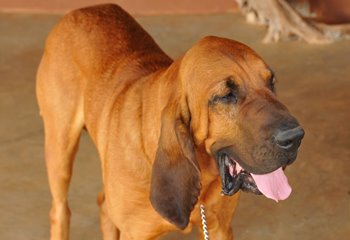
Mark was asked to walk on the stony sand, leaving a single footprint, before heading off across the grassy plains accompanied by some rangers. I stayed with Wilfred and his track team with Tipper. First Wilfred explained how Tipper had been trained – when the chest harness is put on to the dog, he knows it is time to go to work. True enough, as soon as Tipper was harnessed his body language seemed to change and he was eager to move off, just like a dog at home waiting for his walk.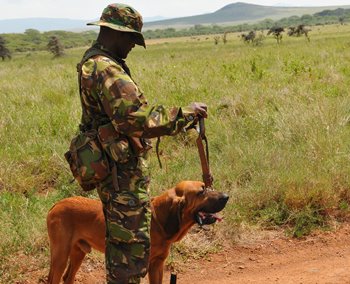
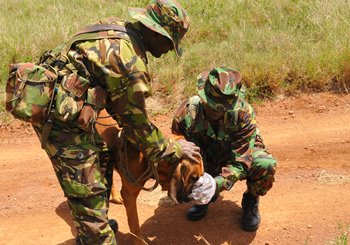 One of the rangers then put gloves on and got a polythene bag with a gauze pad within it. Being very careful not to contaminate the gauze, he pressed it down hard on the stony sand where Mark’s footprint was. He then placed the bag containing the gauze over Tipper’s nose for no more than a few seconds. Tipper immediately started to pull his handler and off we went, first along the stony sand track at a fast walk, then a gentle jog and before I knew it we took a sharp left, leaving the track, running through the long grasses of Lewa.
One of the rangers then put gloves on and got a polythene bag with a gauze pad within it. Being very careful not to contaminate the gauze, he pressed it down hard on the stony sand where Mark’s footprint was. He then placed the bag containing the gauze over Tipper’s nose for no more than a few seconds. Tipper immediately started to pull his handler and off we went, first along the stony sand track at a fast walk, then a gentle jog and before I knew it we took a sharp left, leaving the track, running through the long grasses of Lewa.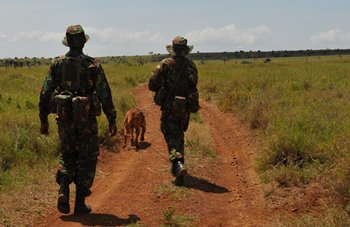
The track team, who train hard with long runs led by Pete Newland, ex British military, had no trouble keeping up with Tipper. I wish I could say the same! In the back of my mind I was thinking about puff adders in the long grass where we were running! When we finished the exercise and had regained normal breathing I did ask Pete about this and he said they haven’t had too much trouble at Lewa/Borana but further north in the Sera Conservancy where he also works with the Northern Rangelands Trust, puff adders can at certain times of year be a problem. He had just purchased six viles of antidote at $1,000 US a vile . The antidote can be used for rangers and also for the dogs should they be bitten.
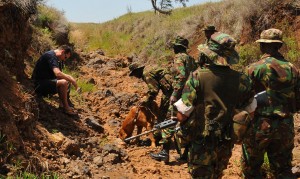 Tipper was incredibly focused on his path and there was no dithering about. A few kilometres later, we found ourselves on a dry river bed and by the time I caught up with the rangers, Tipper was happily slobbering all over Mark who had been primed for his arrival with a treat. It was an impressive display of how these track dogs play an important role in protecting rhinos.
Tipper was incredibly focused on his path and there was no dithering about. A few kilometres later, we found ourselves on a dry river bed and by the time I caught up with the rangers, Tipper was happily slobbering all over Mark who had been primed for his arrival with a treat. It was an impressive display of how these track dogs play an important role in protecting rhinos.
50% of the money that we raised through our #RealRhinos campaign in aid of Save the Rhino International has gone to help the Dog Squads in Kenya. We hope to buy vital equipment for them, from bite suits which cost around £500 each to dog food at £7 per week. We want to help pay for veterinary care for the dogs and also the rhinos – to pay for a vet to treat a rhino that has been shot costs around £1000. The rangers need our support too – they need basic supplies like boots and hats so that they can carry out their day to day duties. To date our campaign has raised £6500. By going on safari with us or buying a rhino Tshirt from our Real World Store you can help us raise even more.
We have also ‘adopted’ a puppy – a Belgian Malnois – who is now 5 months old, has had his vaccinations and has started his training with Daryll Pleasants from Animals Saving Animals. The puppy will eventually be deployed to an anti-poaching dog squad working in the Save Valley in Zimbabwe where one of only eight viable black rhino breeding populations can be found.
Visiting Borana or Lewa
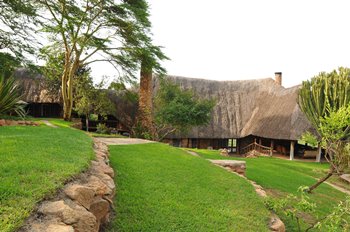 This was my first visit to the eastern Laikipia region – I wish someone had told me how beautiful this region is as I would never have waited so long to visit. Part of the appeal of this area to me is seeing how the traditional cattle ranches have diversified, embracing conservation and tourism. The lodge at Borana has a real homestead feel, with beautiful gardens and guinea fowl casually strutting across the lawns. The walls are adorned with historic black and white images telling the story of Borana from the trophy hunting days to the forefront of the modern conservation movement. Borana remains family owned, by Michael and Nicky Dyer .
This was my first visit to the eastern Laikipia region – I wish someone had told me how beautiful this region is as I would never have waited so long to visit. Part of the appeal of this area to me is seeing how the traditional cattle ranches have diversified, embracing conservation and tourism. The lodge at Borana has a real homestead feel, with beautiful gardens and guinea fowl casually strutting across the lawns. The walls are adorned with historic black and white images telling the story of Borana from the trophy hunting days to the forefront of the modern conservation movement. Borana remains family owned, by Michael and Nicky Dyer .
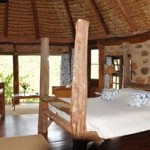
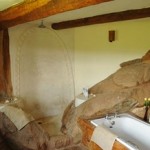 There are just eight beautiful cottages perched on the side of the valley – all thatched, with decks and log fires. We were in Room 4 – a very pretty room close to the main area decorated in blue and white with a huge four poster bed carved from local wood at the centre of the room. Downstairs was a lovely bathroom, fashioned from the rock. We enjoyed an alfresco lunch at the pool, with produce from the farm – quiche with salads and beef carpaccio. The beef comes from the Borana cattle and is supplied by Michael Dyer’s son, the ‘Well Hung Butcher’ . Cattle ranching is how Borana started but nowadays although cattle still graze the grassland there is holistic land management with their grazing carefully monitored in order to enhance grazing for wildlife. Cattle play an important and often overlooked role, reducing moribund grass biomass, promoting seed dispersal and increasing the nutritional value of the grass while decreasing the risk of bush fires.
There are just eight beautiful cottages perched on the side of the valley – all thatched, with decks and log fires. We were in Room 4 – a very pretty room close to the main area decorated in blue and white with a huge four poster bed carved from local wood at the centre of the room. Downstairs was a lovely bathroom, fashioned from the rock. We enjoyed an alfresco lunch at the pool, with produce from the farm – quiche with salads and beef carpaccio. The beef comes from the Borana cattle and is supplied by Michael Dyer’s son, the ‘Well Hung Butcher’ . Cattle ranching is how Borana started but nowadays although cattle still graze the grassland there is holistic land management with their grazing carefully monitored in order to enhance grazing for wildlife. Cattle play an important and often overlooked role, reducing moribund grass biomass, promoting seed dispersal and increasing the nutritional value of the grass while decreasing the risk of bush fires.
Milk, eggs, fruit and vegetables are harvested from Michael’s parents garden, Tony & Rose who still live on Borana – Tony just celebrated his 90th birthday. All this fresh produce and a wonderful kitchen team ensured all the food we enjoyed was just delicious.
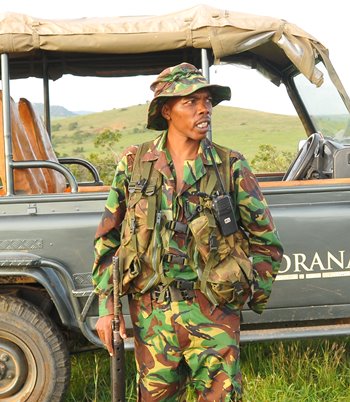 In the afternoon we joined Flick, who manages the lodge, for afternoon tea and cake before Rianto collected us and took us to the anti-poaching headquarters to meet Flick’s husband Sam Taylor, who heads up operations. It was fascinating to see the HQ and speak to Sam and the rangers about their work. We were invited to join the rangers on a deployment. On our way we saw lots of wildlife including a very friendly herd of elephants. It was great to see the rangers all whip out their phones to take photos for their families and get as much joy out of the encounter as us.
In the afternoon we joined Flick, who manages the lodge, for afternoon tea and cake before Rianto collected us and took us to the anti-poaching headquarters to meet Flick’s husband Sam Taylor, who heads up operations. It was fascinating to see the HQ and speak to Sam and the rangers about their work. We were invited to join the rangers on a deployment. On our way we saw lots of wildlife including a very friendly herd of elephants. It was great to see the rangers all whip out their phones to take photos for their families and get as much joy out of the encounter as us.
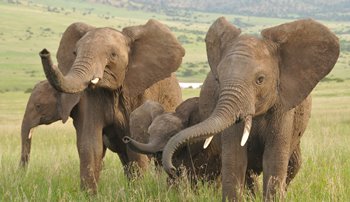 The rangers talked us through their kit, which includes weapons and a heat seeking camera per team. They explained how they stay in the same team of four of five rangers – this way they get to know their roles and how best to work together. The rangers receive training, board and lodging and a good salary in Kenyan terms of around $500 US per month. What struck us was the pride the rangers took in their position – they want to protect the rhinos just as much as we want them to.
The rangers talked us through their kit, which includes weapons and a heat seeking camera per team. They explained how they stay in the same team of four of five rangers – this way they get to know their roles and how best to work together. The rangers receive training, board and lodging and a good salary in Kenyan terms of around $500 US per month. What struck us was the pride the rangers took in their position – they want to protect the rhinos just as much as we want them to.
During our short stay it was overwhelmingly apparent that the conservancies work very much in partnership with the community. From funding a mobile clinic which roams for miles providing health care in areas that would have very little access otherwise, to an education support programme which has helped to put dozens of children through school.
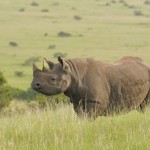
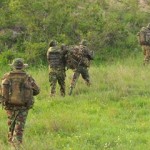

We checked in on Linda, one of the rhinos that the team we had joined were working to protect before reaching a site on the western border of the conservancy where the rangers were to set up their overnight watch. We watched the rangers go through their routine, climbing to a brow of a hill to make a camp before setting off. The sun was starting to dip, jackals crossed our path and a huge herd of buffalo seemed to surround us as we made our way to neighbouring Laragai House for sundowners. A perfect setting for ice cold gin and tonics and nibbles.
Returning to the lodge, after negotiating hyenas, we found a cosy glow from the newly laid fire in our cottage and steaming hot water with an abundance of lovely Cinnabar Green natural soaps and shampoo to enjoy. Dinner was a real ritual and felt very special- first we met for drinks in an imposing sitting room with long bar and a vast fireplace surrounded by comfy sofas and arm chairs with dogs snoozing on the rugs around the room. We then moved into the dining room to sit at a huge wooden table for a leisurely candlelit dinner. The chocolate souffle (with a glass of Amaretto) was divine!
Exclusive Offer – book by 31 March 2017
One night free at Borana – valid for travel all year excluding Christmas/New Year. Borana Conservation fee of $105 per person payable for free night.
You can now stay 3 nights for the price of 2 at Borana – exclusive to Real Africa’s #RealRhinos campaign. In addition to you benefiting from a wonderful free night, the Dog Squad will also benefit as the Real Africa Trust will make a £50 donation to Save the Rhino International, per person on behalf of all clients booking this deal.
To find out more please click here.
Visit the Dog Squad
To visit the dog squad from Borana costs an additional £90 per person – this comprises a small fee for the dog squad plus the Lewa conservation fee of $105 per person per day. We recommend heading over to Lewa for the whole day, enjoying a safari on this side of the conservancy, a dog squad visit and a lovely picnic lunch before returning to Borana. Please ask us for details.
Laikipia is currently experiencing a drought – you may have read reports of looting in the western region of Laikipia – please visit our News section for an update here.


